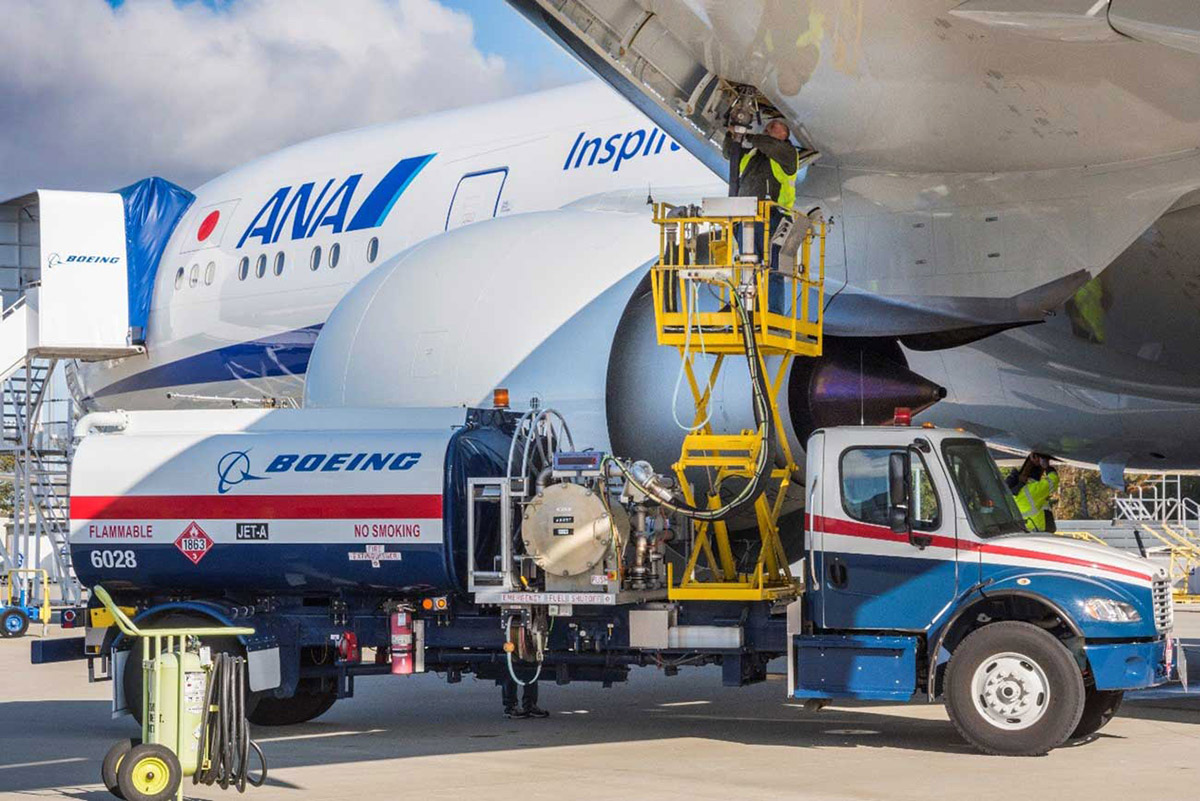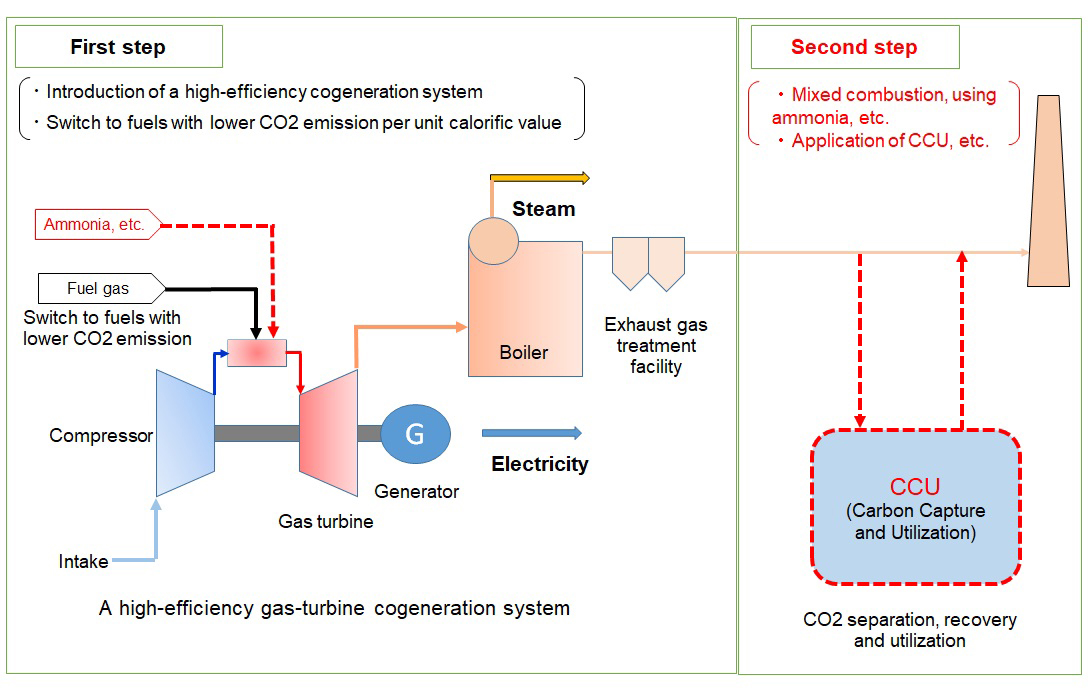ANA Group’s “Carbon-Neutral growth”(Air Transport)
ANA HOLDINGS INC.
Outline
ANA Group has adopted a set of ambitious targets to mitigate CO2 emissions from air transport:
We will take on the challenge of "Carbon-Neutral Growth" to cap on net aviation CO2 emissions from 2020 onwards.
We also aim to reduce in net aviation CO2 emissions of 50% by 2020, relative to 2005 levels.
Description
In 2016, International Civil Aviation Organization (ICAO) adopted Carbon Offsetting and Reduction Scheme for International Aviation (CORSIA), a global carbon offsetting scheme which is designed to complement the basket of mitigation measures to reduce CO2 emissions from international aviation.
Adopting the four basket of measures identified by ICAO based on CORSIA, the ANA Group has introduced a system which derives CO2 emissions from each flight.
We will offset increases in CO2 emissions above a baseline which is defined as the average of emissions in 2019 and 2020 by the use of sustainable Aviation Fuel (SAF) or market-based measures (use of emissions units).
The four baskets of measures identified by ICAO to achieve international aviation goals.
1) Aircraft-related technology development:
Introduction of fuel-efficient aircrafts and engines
Challenges:
a) Limited number of aircraft and engine manufacturers
b) Electric-powered engine and the aircraft cannot be expected under current technology level
Target:
Achieve 100% introduction of fuel-efficient aircraft by FY2050.
(Achieved 75.9% at the end of FY2018)
An introduction of the energy-saving aircraft such as Boeing 787 will contribute to 20% reduction of CO2 emissions per aircraft.
2) Improved air traffic management and infrastructure use Engine wash, flight operation at optimum altitude / route / speed / center of gravity / etc.
Challenges:
a. Improvement of airport traffic management (altitude, route, speed)
b. Improvement of airport facilities (securing ground electric power unite / reducing use of aircraft power unit)
How to:
A change in the airport traffic management will require revisions in laws and regulations.
Coordination with relevant authorities and operating companies through the Scheduled Airline Association will be necessary.
3) Introduction of Sustainable Aviation Fuel (SAF):
A clean substitute for fossil jet fuels, not being refined from petroleum.
Current maximum blending ratio by volume is 50% versus kerosene.
Challenges:
The current global market share is less than 0.1% of jet fuel demand.
There are not enough market supply and the suppliers are mostly located in Europe and North America.
There are no manufacturers in Asia and the prices are more than two times that of kerosene.
Japan:
The SAF market is immature and support from government support or mandates of are required. We need to advocate for the use of public funds or incentive programs for the development of SAF.
We have partnered with New Energy and Industrial Technology Development Organization (NEDO) to conduct studies on the production and commercialization of SAF.
Overseas:
Most of the SAF producers are located in Europe and North America.
Excess demand keeps the SAF price high and additional cost incur if we are to import them.
We are conducting researche and marketing of SAF producers worldwide. This is to secure SAF purchasing by signing offset agreements with such producers with high CO2 reduction rate.
4) Market-based measures (use of emission units):
Purchasing CO2 emissions reduced by other industries at relatively low price.
There is little supply of ICAO/CORSIA eligible emissions unite programs available in Japan. Advocacy is inevitable to create such supplies in the market.
Conduct research of ICAO/CORSIA eligible emissions unit programs available in the world. We must prepare to make purchase of these units in the near future.
Partner(s)
Overseas:
International Civil Aviation Organization (ICAO)
International Air transport Association (IATA)
Japan:
Ministry of Land, Infrastructure and Transport (MLIT)
Agency for Natural Resources and Energy
The Scheduled Airline Association
Airport Authority and Airport Companies, etc.
Supplementary information
1. ANA Holdings Annual Report (FY2019)
https://www.ana.co.jp/group/en/investors/irdata/annual/pdf/19/19_E_00.pdf
2. ANA Holdings
https://www.ana.co.jp/group/en/
3. ANA Press Release: "ANA Adopts Sustainable Aviation Fuel"
https://www.anahd.co.jp/group/en/pr/201901/20190107.html
4. ANA Press Release: "ANA Signs Offtake Agreement with LanzaTech INC."
https://www.anahd.co.jp/group/en/pr/201906/20190614.html
Similar Innovation Challenges
Achieve 2050 decarbonization target with Net Zero Energy House!
Sekisui House, Ltd.
Achieving net-zero emissions by promoting renewable energy use through both our monozukuri and products.
DAIWA HOUSE INDUSTRY CO., LTD.








